A microbial compound in the gut leads to anxious behaviors in mice
A new study shows how a particular molecule, produced by gut bacteria, affects brain function and promotes anxiety-like behaviors in mice.
Learn more (opens external site)
This article analyzed the role of fractal structures found in plants in light-harvesting to try and increase Solar cell efficiency. Using the biological discovery they were able to yield a 25% enhancement in electric energy production.
Learn more (opens external site)
Biological Discoveries:News, How does a lizard shed its tail?
Among many escape strategies that animals have evolved to evade capture by their predators, autotomy is a prominent one, whereby an animal self-amputates a body part, such as a leg or a tail (see the photo), just to elude its attacker. The ease with which animals can shed their body parts depends on the anatomy […]
Birds are highly capable and maneuverable fliers, traits not currently shared with current small unmanned aerial vehicles. They are able to achieve these flight capabilities by adapting the shape of their wings during flight in a variety of complex manners. One feature of bird wings, the primary feathers, separate to form wingtip gaps at the […]
Berkeley Certificate in Design Innovation, 4 Course Series, UC Berkeley
In today’s world, innovations require weaving together the knowledge, theories and skills of different disciplines. This Certificate introduces design as the creative and critical means to innovate — to define, to imagine, and to advance a globally just future.
The Berkeley Certificate in Design Innovation assumes that […]
Brainless slime mold grows in pattern like Tokyo’s subway system
A group of researchers led by Toshiyuki Nakagaki from the Hokkaido University in Japan, placed Physarum polycephalum in a petri-dish scattered with oat flakes. The position of food scraps was deliberately placed to replicate the locations of some of the most visited site […]
Ultra-dense, curved, grating optics determines peacock spider coloration
Controlling light through photonic nanostructures is important for everyday optical components, from spectrometers to data storage and readout. In nature, nanostructured materials produce wavelength-dependent colors that are key for visual communication across animals. Here, we investigate two Australian peacock spiders, which court females in complex dances with either iridescent color patterns (Maratus robinsoni) or an […]
BioMimicry Institute – Youth Design Challenge Manager
The Biomimicry Institute is thrilled to recruit for the Youth Design Challenge (YDC) Manager position. The YDC is a hands-on project based learning experience that provides classroom and informal educators with an engaging bio-inspired framework to introduce bio-inspired design and an interdisciplinary lens on science, engineering, and environmental literacy. YDC gives […]
News, Flexible wings take the effort out of swimming for diving penguins
Swimming with penguins in the wild is a mind-blowing experience. When the ‘mini torpedoes’ hurtle past, you can barely make out the animals’ shape, let alone their movements. This was the problem faced by Hiroto Tanaka and colleagues from the Tokyo Institute of Technology, Japan, as they tried to understand how […]
This is a great introductory class for those of you who want to explore the essence of design with a focus on the environment and sustainability. During the course, you will understand a dozen of ways to approach to design. You will also be able to examine and design a real-life site!
Petroleum-based plastics are useful but they pose a great threat to the environment and human health. As a result, it is highly desirable yet challenging to develop sustainable structural materials with excellent mechanical and thermal properties for plastic replacement. Inspired by nacre’s multiscale […]
This study focuses on replicating the remora disc, which allows the Remore Suckersish to easily attach and detach to/ on moving sea-life, in order to create an adhesive disc for underwater hitchhiking. The potential application of this disc can spread from helping human divers, to helping remotely operated vehicles easily traverse […]
Augmenting Human Dexterity is a mechanical engineering class taught by Professor Hannah Stuart, who we highlighted as our team connection last week. The course aims to help students develop “a fundamental understanding of the state-of-the-art, design processes and product realization.” There will be opportunities for hands-on experience in designing prostheses and […]
Researchers have discovered how certain flavonoids — a type of metabolic product from plants and other organisms — can kill yellow fever mosquito larvae. These compounds inhibit an enzyme, called Nobo, which is used to synthesize ecdysone, a key hormone in the life cycle of insects. The most efficient flavonoid tested, […]
To learn how to approach human limb regeneration, scientists have begun to study the incredible regenerative powers of the axolotl. Axolotls are capable of regrowing their limbs and even organs. This paper explores the possible insight that could be gained by understanding the genetics behind axolotl limb regeneration.
Bioinspired Nanochannel Membranes for Blue Energy Generation
The adjustable manufacturing of diverse polymer composites with nanostructures for osmotic power generation, including homopolymer membranes, mix membranes, and Janus membranes, is discussed in a study available as a pre-proof in the journal Giant.
Learn more (opens external site)
News, Researchers Teach Human Brain Cells in a Dish to Play “Pong”
Researchers at the biotechnology startup Cortical Labs have created “mini-brains“ consisting of 800,000 to one million living human brain cells in a petri dish, New Scientist reports. The cells are placed on top of a microelectrode array that analyzes the neural activity. “We think it’s fair to […]
Engineers at Rutgers University have invented a 3D-printable hydrogel that senses a change in light and consequently changes shape. It is inspired by the color-changing skin of cuttlefish, octopus, and squid, and it is meant to function as a type of artificial muscle. The main design inspiration was modeled after a […]
Whales, which have baleen plates, feed by taking huge mouthfuls of water and food. They then push the water back out using their baleen plates as a strainer, keeping the food in their mouths. Scientists have long wondered how whales are able to accomplish such tasks without choking under the immense […]
Nanomanufacturing of bioinspired surfaces
Abstract: The development trend of materials is complex, intelligent and dynamic, and bioinspired materials have all these characteristics. Bioinspired materials development will affect the improvement of human body organ replacements, aircraft, rockets, and other consumer products. The ultimate goal of the field of […]
Controlling adhesive material remotely with light
Adhesive mechanisms in the natural world have many advantages: they are always strongly adhesive — and without any glues or residues. Scientists are researching how these mechanisms can be artificially created. An interdisciplinary research team has now succeeded in developing a bioinspired adhesive material that can be […]
Paper, Gene editing now possible in ticks
Researchers have successfully used CRISPR-Cas9 to edit the genomes of the black-legged tick. To accomplish this feat, they developed an embryo injection protocol that overcame a major barrier in the field.The work appears February 15 in the journal iScience.
Learn more (opens external site)
Artists are borrowing from biology to create dazzling “biodesigns” that challenge our aesthetics—and our place in nature
Learn more (opens external site)
Biomimicry in UX Design
This article describes the newly emerging practice of biomimicry in digital design. It illustrates the current practices of designers who emulate biology in their work. The Vice President of software design at MentorMe incorporates the Fibonacci sequence into his work because it so often appears in nature. The Fibonacci sequence can […]
Animal walking is one of the most robust and adaptive locomotion mechanisms in the nature, involves sophisticated interactions between neural and biomechanical levels. It has been suggested that the coordination of this process is done in a hierarchy of levels. The lower layer […]
Sustainable Housing at California
SHAC is designing and building a more sustainable world through interdisciplinary building projects focused on energy, affordability, and scalability. We work closely with professionals and our community to promote and implement equitable building development processes and informed sustainability educational programs. All of our work draws heavily from political, urban planning, architectural, systems, and engineering theory.
[…]
Bioinspired Neuron-like Electronics
As an important application of functional biomaterials, neural probes have contributed substantially to studying the brain. Bioinspired and biomimetic strategies have begun to be applied to the development of neural probes, although these and previous generations of probes have had structural and mechanical dissimilarities from their neuron targets that lead to […]
Bioengineered pathogens for drug delivery.
Abstract: Synthetic carriers such as polymer and lipid particles often struggle to meet clinical expectations. Natural particulates — that range from pathogens to mammalian cells — are therefore worth examining in more depth, as they are highly optimized for their specific functions in vivo and possess features that are often desired […]
Spider silk is a fascinating material, combining high strength and elasticity that outperforms most synthetic fibers. Another intriguing feature of spider silk is its ability to “supercontract,” shrinking up to 50% when exposed to water. This is likely on account of the entropy‐driven recoiling of secondary structured […]
A team at MIT has successfully engineered a woody composite that is as tough as bone and hard as aluminum. Being that a wood cell wall is constructed from fibers of cellulose — nature’s most abundant polymer and within each fiber are reinforcing cellulose nanocrystals. Therefore these crystals could be worked […]
News, Cut all meat production to save the planet
A scientific study published by a UC Berkeley professor (Michael B. Eisen)and a Stanford University professor has called for the elimination of all meat production in order to cut the amount of greenhouse gas emissions and help prevent global warming.
The study details that the resulting drop in methane and […]
MIT ocean and mechanical engineers are using advances in scientific computing to tackle challenges such as microplastics, algae blooms, coral bleaching, and rising temperatures.
The team is developing and using numerical simulation approaches to explore the design space for underwater devices that have an increase in […]
News – Lockheed Martin Is Reprogramming Cells To Bioproduce New Materials
Cells form the cornerstone of life, and Lockheed Martin (NYSE: LMT) is researching ways to create the building blocks of novel materials. In a new cooperative agreement with the Army Research Laboratory, Lockheed Martin material scientists will work with industry and Army scientists who design microbes to edit single-cell organism DNA. […]
This bio-inspired glue can seal wounds in just 15 seconds
Researchers and engineers have designed an innovation biocompatible enough to seal wounds and stop bleeding. This innovation is inspired by the “sticky stuff” barnacles use to cling to rocks and can form a tight seal quickly in challenging environments and/or surfaces. With this innovation, there could be casting improvements in traumatic wound care and save […]
Lotus effect: Self-cleaning bioplastics repel liquid and dirt
Researchers have developed a self-cleaning bioplastic that is sturdy, sustainable and compostable. The innovative plastic developed at RMIT University in Melbourne, Australia, repels liquids and dirt, almost replicating/taking inspiration from the lotus leaf, then breaks down rapidly once in soil. It is simple to make and could easily be integrated with […]
Abstract
A grand challenge facing society is climate change caused mainly by rising CO2 concentration in Earth’s atmosphere. Terrestrial plants are linchpins in global carbon cycling, with a unique capability of capturing CO2 via photosynthesis and translocating captured carbon to stems, roots, and soils for long-term storage. However, many researchers […]
Bio-mimicry of polar bear fur offers insulation
Inspired by the microstructure of polar bear hairsand how they provide heat insulation in an inhospitable environment, Chinese researchers have developed an insulator that reproduces the structure of individual hairs in a synthetic material. As the properties of polar bear hair work to prevent heat loss, they are a useful model […]
Researchers at Harvard and Emory University created a biohybrid fish using paper, plastic, gelatin, and two muscle layers. These muscle layers were created from human cardiac cells. The design of the model fish was based on zebra fish, with a muscle layer on either side of the […]
Center for Bioinspired Engineering, California Institute of Technology
This research organization has members from many different areas of expertise like Aerospace, Bioengineering, Biology, Chemistry, Computing and Mathematical Sciences, and Mechanical Engineering. The organization strives to use solutions found from nature to solve technological challenges. This organization focuses on wind energy, flow control, propulsion, and biomedical devices.
Lotus Leaf-Inspired Self-Cleaning Bioplastic Created
Researchers from the Royal Melbourne Institute of Technology, a public research university in Melbourne, Australia, have taken bioinspiration from lotus leaves to develop a self-cleaning bioplastic that is sturdy, sustainable, and compostable. Water-repellant lotus leaves give way to the flower’s seemingly clear surface. As such, the RMIT team gathered starch and […]
Learn about our two Decals!
 Click here to find out more about our Fall Bioinspired Design Decal and our Spring Bioinspired Design in Action Decal – ALL MAJORS are welcome.
Click here to find out more about our Fall Bioinspired Design Decal and our Spring Bioinspired Design in Action Decal – ALL MAJORS are welcome.Berkeley BioDesign Community
 Click here to learn about the BioD: Bio-Inspired Design @ Berkeley student organization or here to signup for more info.
Click here to learn about the BioD: Bio-Inspired Design @ Berkeley student organization or here to signup for more info.Search
Student Login


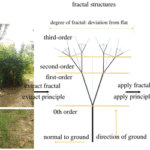

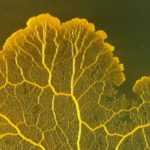
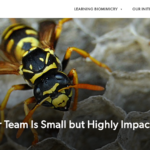
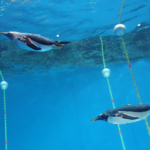



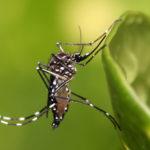
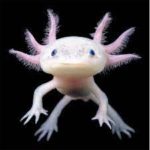
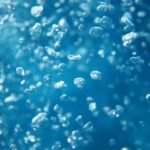
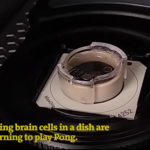


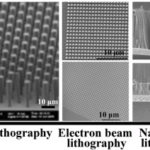

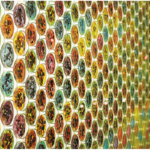
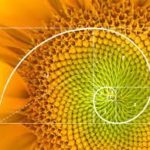
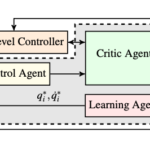
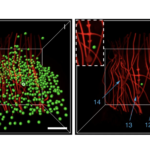

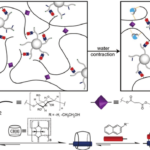

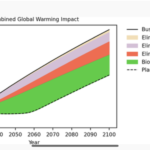
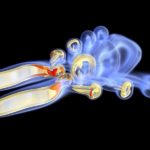


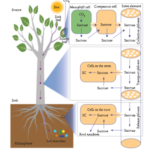
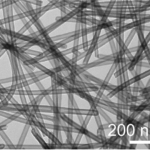
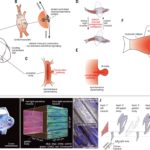
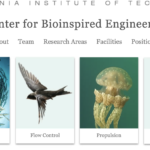
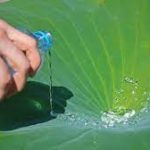


I imagine that the neurological circuits underlying these processes are governed by both 2d spacing maps with their brains as…
to reduce the impact of car accidents, it may be possible to study the force diverting physics of cockroaches to…
you see this type of head-bobbing stability in many avian creatures related to pigeons like chickens. the head ability to…
not like they taught horses how to run! this is an example of convergent evolution where both sea creatures and…
The brain functions in a similar way with neuronal connections. our brains are able to utilize the multiplicity of connections…